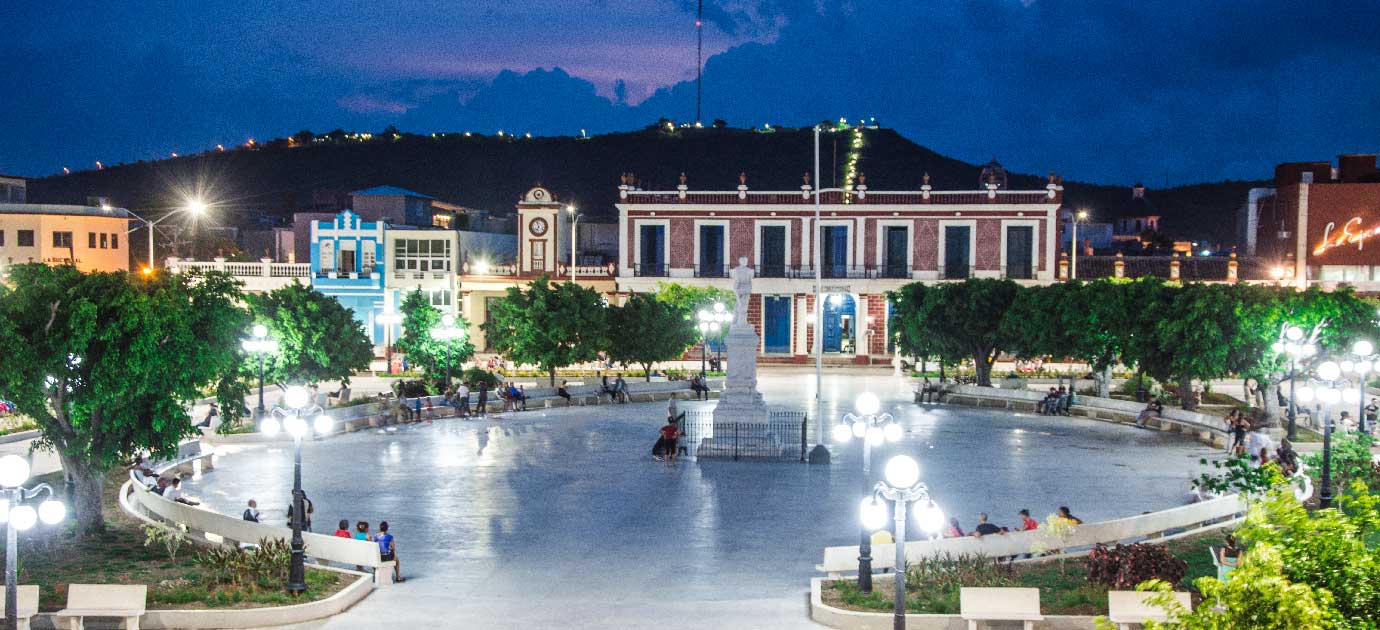
Photo: William Parrao
Among the many charms of the city of Holguín, the parks are among the most notable ones for surpassing the concept of spaces to rest and have fund, and becoming traces of the solid cultural base created by the inhabitants of this city, which boasts of its universal projection.
It is endorsed by the National Commission of Monuments, which through Resolution No. 4 of September 23rd, 2014, declared the "Historic Compound of the System of Squares of the City of Holguín" a Protection Zone of the Republic of Cuba.
It is a unique case in Cuba, given by 12 squares and smaller ones spread across a stretch of 2 kilometers wide, starting at La Loma de la Cruz and ending at the jointure of the rivers Marañón and Jigüe, and lateral limits composed by the streets Máximo Gómez and Morales Lemus, as described by the president of the Provincial Commission of Monuments and Historic Sites, Hirán Pérez Concepción.
The system, he says, began its conformation in 1720, with the creation of La Parroquial Square, now Julio Grave de Peralta Park; followed by the Plaza de Armas (parade ground), now Calixto García Park. Then, in 1752, the Plaza Nueva (San José or Carlos Manuel de Céspedes Park) emerged, followed by the Camposanto (Martí Park), Mercado O'Donnell (La Marqueta) and Mantilla (Rubén Bravo Park), as well as the Plazuela del Ferrocarril del Norte (Northern Railway Square), also framed in the colonial period.
In the twentieth century were built the Plazuela del Ferrocarril del Sur, Gonzalez Valdes park popularly known as Loma de la Cruz with its famous staircase of 458 steps, as well as the squares Finlay, today Armando Mestre, and Paquito Gonzalez. The youngest of the complex is the Sculpture Park, opened in 2014.
The extension, coinciding with the historical center of the city, is given by the patrimonial value, in different degrees, of more than 800 buildings, according to a meticulous investigation carried out with the intention of declaring the area a National Monument, a proposal that did not prosper and gave rise to the protected status.
In April 2016 was finally completed the Plaza de La Marqueta whose rehabilitation, restoration and conservation had begun at the end of 2014. The people who often go there or visit it for the first time find an attractive cultural-commercial complex, where it is possible to buy, among other items, furniture, handmade clothes, and variety of fine crafts made of leather, fibers, wood, glass and clay.
One of the facilities of social use recovered in that complex is the headquarters of the Hermanos Saíz Association, also the Casa del Joven Creador (House of Young Creators). It is located in what, months ago, was the battered facility of a trading company. And now, as the result of the good taste of the designers and the painstaking work of the executors, there is a gallery on the ground floor for exhibitions of various artistic expressions and a cafeteria.
To restore the Calixto García Park a massive work has been done. The jardinières were replaced together with the circular granite benches and the small ones, as well as the metal walls that replaced the old ones. At the four entrances, the original pilasters were also re-established with their pinecones, while the three fountains of the park were rescued.
With the passing of time, this park became the heart of the city. It is surrounded by emblematic institutions such as La Periquera Provincial Museum, the Eddy Suñol Theater and the Alex Urquiola Provincial Public Library, which, like other buildings, have profited from construction actions. Also in the vicinity and under reconstruction is the hotel Saratoga, notable for its heritage values.
During 2013 and 2014, restoration work was done at the Carlos Manuel de Céspedes Park, which included the reproduction and placement of the clay tiles manufactured in the municipality of Rafael Freyre, as well as lamps of colonial style ordered to artist José Gabriel Maslotikhas. Likewise, the gardens underwent deep changes.
Some nearby buildings were also remodelled, among which are the Provincial Chess Academy and the birthplace of José Juan Arrom, an outstanding scholar of Hispanic American culture. One can also see the ongoing restoration of the former La Esmeralda boarding house, a hotel of the Encanto chain in the near future.
Everyone visiting the parks Loma de la Cruz, Rubén Bravo, Julio Grave de Peralta and Martí, as well as Finlay and Paquito González squares, will easily come acquainted with the reconstruction works done there which gave them back vitality.
Historian Hiram, a passionate defender of the material and spiritual elements that make up the identity of the region, ask for the people’s larger support to confront social indiscipline which causes damage to the work done, at the time he demands from the Municipal Government to make law work on the people’s proper behavior and the protection of the patrimony.
The Historic Compound of the System of Squares of the City of Holguín, a unique element of the Cuban architecture treasure, should be defended with much passion, asserts this notable historian.


